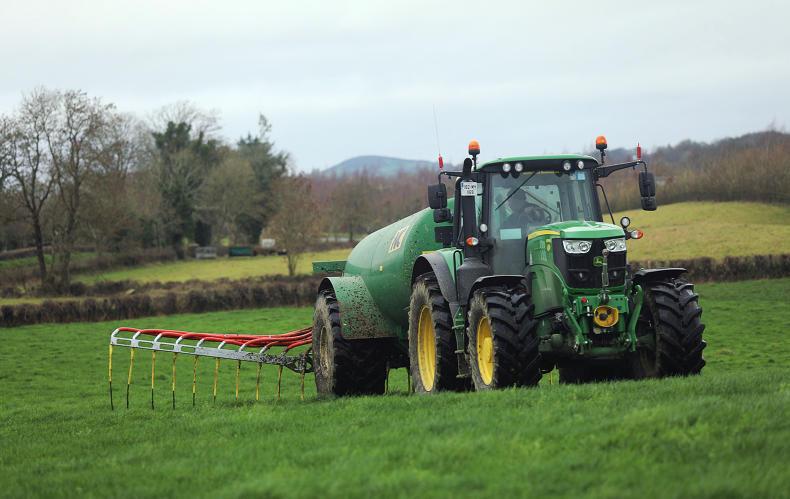Slurry
With heavy covers of grass on some farms and a lot of slurry going out across the south of the country this week, it has caused problems on some farms. What are your options? Ideally, you should be spreading slurry on very low covers of grass to avoid contamination and waste. These could be fields that were grazed late into December and are bare, or fields that you have just grazed with cattle in the last two weeks.
The trailing shoe is an option where you have heavy covers, as it won’t soil the grass as much as a splashplate will. Trailing shoe application also has the potential to increase N recovery by a further three units N per 1,000 gallons of slurry. Try and have slurry as watery as possible if spreading on heavy covers, as there will be less chance of it staying on the grass blades.
Spreading in damp conditions and avoiding very dry weather will also help slurry to incorporate into the ground. Use your soil tests to decide where you need the slurry most and in the absence of soil tests aim for silage fields, as these will be most likely lower in P and K. To maximise nitrogen recovery aim to spread on cool, calm, damp days. If spreading urea, wait for seven to 10 days after slurry spreading to spread fertiliser.
To graze or not to graze
I’ve had a couple of calls in the last week on whether to let cattle out to graze or not. Very strong winter growth has meant there is a lot of grass out there on farms. My advice was to let out the lightest of the weanlings and get some of these covers grazed off. This will free up some ground for slurry and should help to kickstart growth.
Severe weather conditions in February 2018 saw grass disappear very quickly, so be mindful that it may not be there in four to six weeks. You need to be flexible and prepare to take cattle back in if weather conditions deteriorate. Silage saved now could be needed later in spring if animals are housed again. I wouldn’t advise taking animals off forage crops to graze paddocks and then back to forage crops, as it could lead to digestive upsets and issues with refusal when going back indoors.
Cattle finishing
With cattle supplies expected to tighten in April, May and June ask yourself is there an option to delay finishing some cattle in the next two months. Cheapest liveweight gains are always achieved in the first three months of the grazing year. Cattle could be reduced back off meal in the next few weeks – this in turn will reduce costs.
Talk to your factory about supply and check out will it work for you. Just because you finished cattle in March last year doesn’t mean you have to do the same this year. Steers or heifers would be most suitable for this. Bulls are a different story and probably need to be kept going on concentrate feed to finish in spec.






 This is a subscriber-only article
This is a subscriber-only article










SHARING OPTIONS: